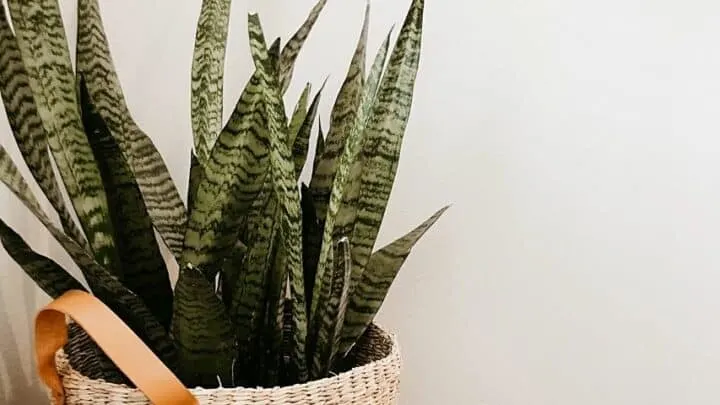Snake plants are known to be hardy plants. Even when neglected, they usually thrive.
However, brown spots on Snake plants are an issue that might face over time.
Here’s the why and how to fix this annoying issue.
What Causes Brown Spots on Snake Plants?
Brown spots on Snake plants are usually caused by either over- or underwatering, chlorinated water, excessive sunlight and heat, cool temperatures, over-fertilization, and pest infections. Even though snake plants can withstand some negligence, consistent negligence is bad for your Snake plant.
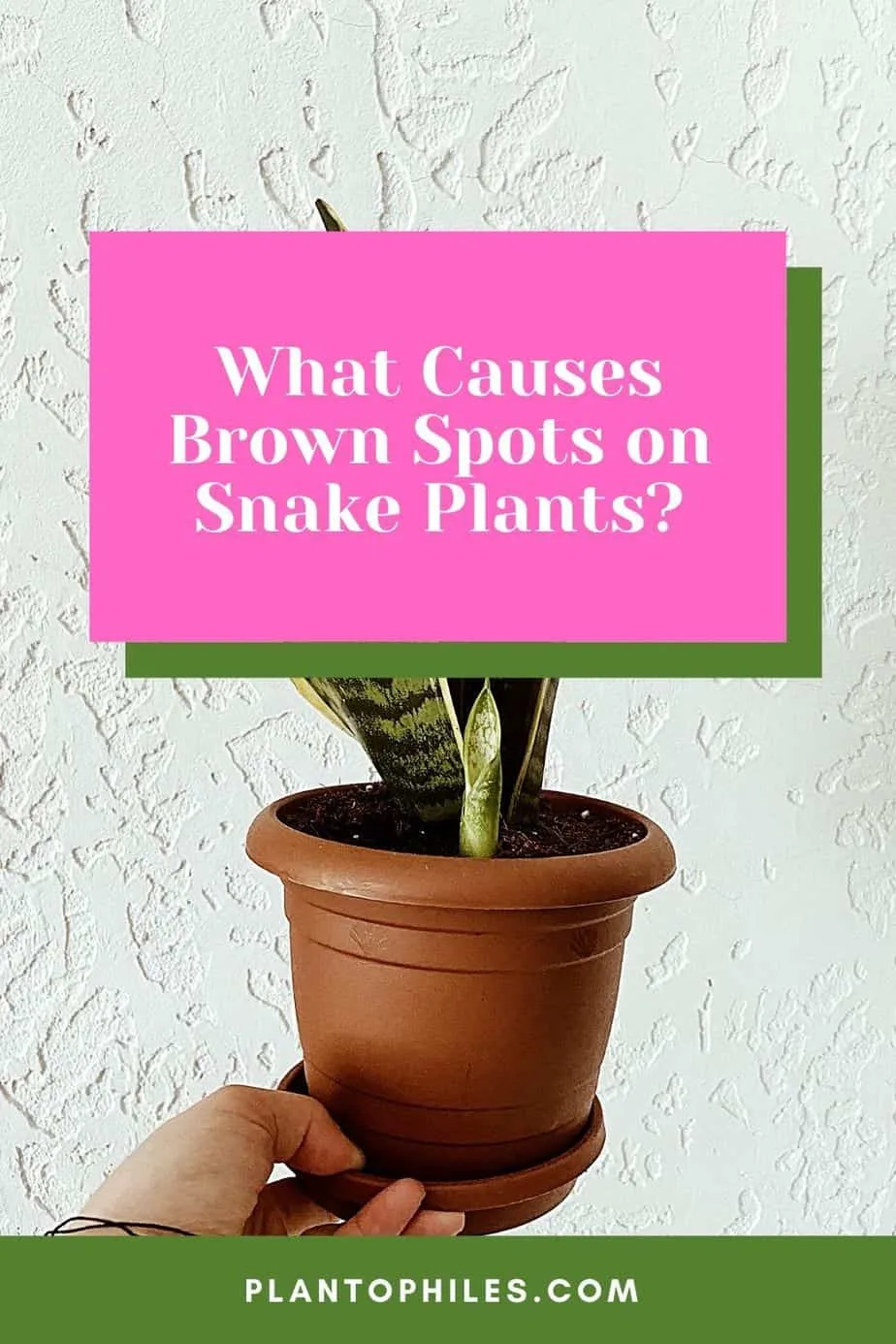
What Causes Brown Spots on Snake Plants?
Brown spots steal the beauty of the foliage of the snake plants. Although brown spots indicate that your plant is sick, it is still not too late to save your plant.
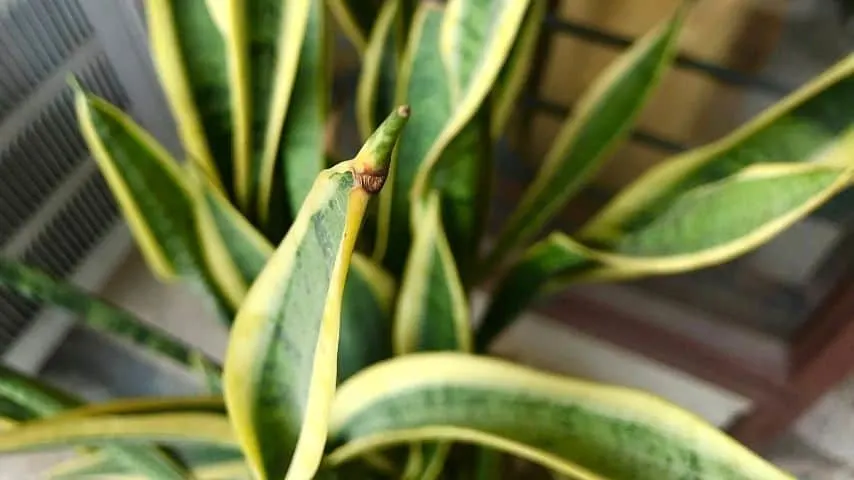
The brown spots developing on your snake plants indicates that they’re sick
I have summarized several reasons you’ll have to be wary of while taking care of these Snake plants.
1. Inadequate Watering
Watering a plant is a tricky thing that can cause adverse effects on the plant.
Over-Watering
If your soil becomes soggy, the roots will be suffocated. The waterlogged soil will prevent aeration of the roots and allow aerobic bacteria that lead to root rot.
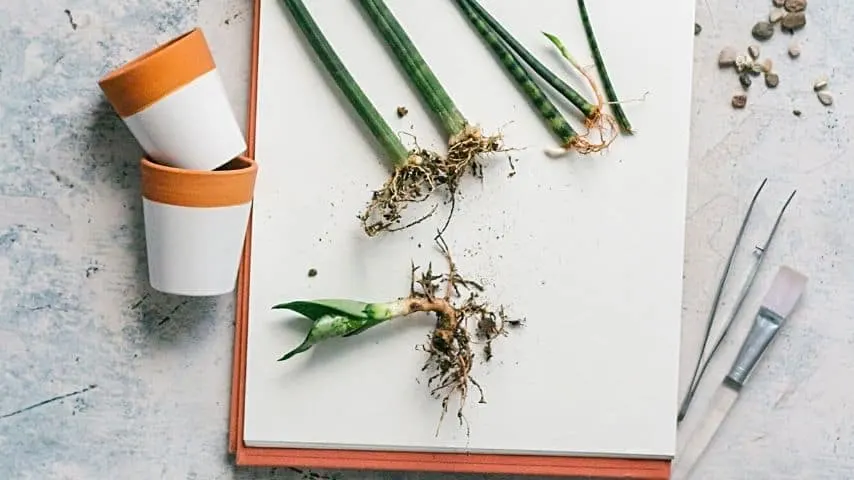
Check to see if your snake plants’ roots have root rot; it’s an indication that the plant’s overwatered
The soil will become wet to the point that it will be squishy to touch. Soon, there will be the formation of brown spots and blisters on the leaves.
Once the roots fall prey to an infection, they can’t carry out their function properly. The roots that are unable to absorb nutrients lead to deficiencies in leaves.
I would recommend gently pushing your finger 1-2 inches into the soil to check the moisture level of the soil. There is no need to water if the soil is still damp.
Under-Watering
Snake plants can thrive even in low water conditions. But don’t neglect to water the plant.
Underwatering greatly affects the snake plant and leads to its early demise. If your plant is underwater, the leaves will first become yellow with brown spots on the surface.
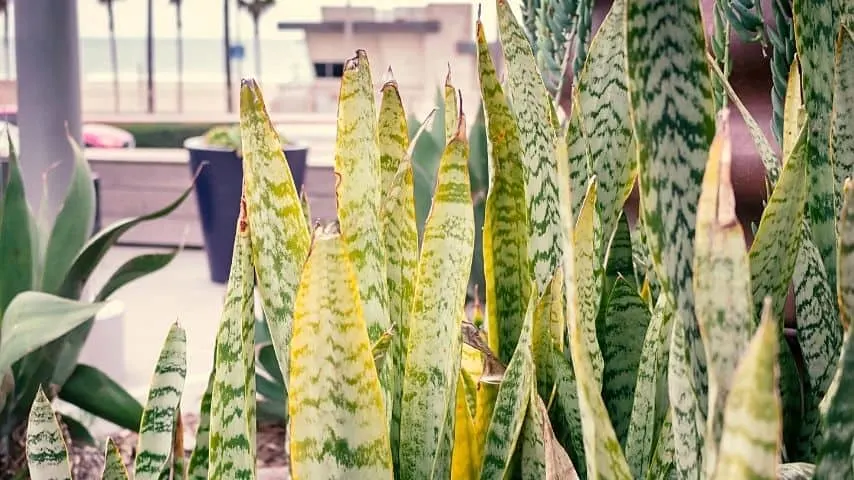
When your snake plant is underwatered, its leaves will start to yellow before developing brown spots
You can still save an underwatered snake plant by properly watering it.
It’s better to balance out your schedule when you water your snake plants. Inconsistent watering will ruin it.
2. Chlorinated Water
Snake plants are vulnerable to any change occurring in the water. The presence of chlorine is like poison to the leaves of snake plants.
Snake plants are stressed when they are exposed to chlorinated water (tap water). The chlorine will accumulate in the soil, preventing any intake of the nutrients, and would lead to brown spots on leaves.
The chlorinated water prevents potassium intake into the roots. Potassium deficiency leads to the development of brown spots on the leaves.
Always use a filtration system to clean out the water before spraying your snake plants with it. You can also place the water in sunlight for two hours to remove all traces of chlorine from it.
3. Excessive Sunlight and Heat
Snake plants can grow in low sunlight. If you place them in direct sunlight, your plant won’t survive.
Receiving direct sunlight would damage the chlorophyll and cause brown spots to appear on the leaves. If you are not careful, the leaves would sometimes burn.
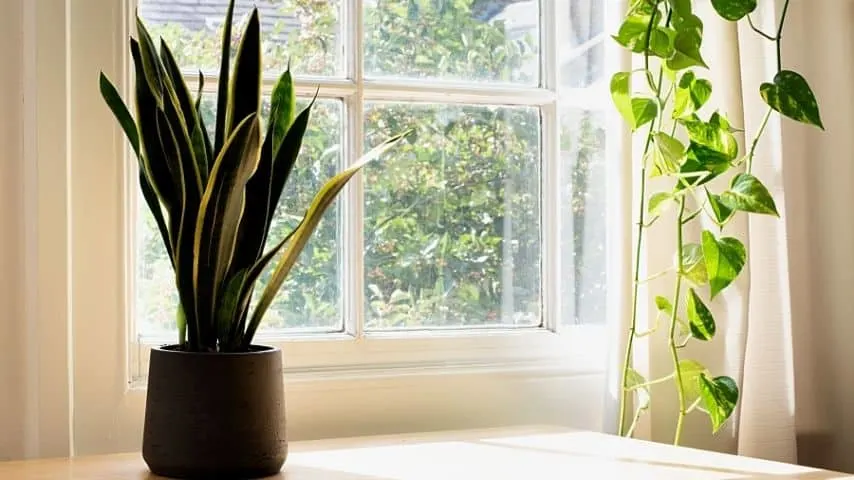
Make sure to place your snake plant in a spot less exposed to indirect sunlight to avoid brown spots
Try placing snake plants in a spot where there is less indirect sunlight. Try to adjust the light levels and rotate snake plants evenly so that every corner gets sunlight.
Use the help of fluorescent light if you want the light conditions to be constant. Try to keep the environment optimum for its healthy growth.
4. Cool Temperature Exposure
Snake plants have zero tolerance to temperature fluctuations. Their optimum temperature ends at the limit of 12 degrees Celsius (55 degrees Fahrenheit).
The plant cannot withstand temperatures below this and will develop brown spots on the foliage. The stress takes a toll on the roots and prevents the intake of nutrients.
You should keep the temperature constant between 65-80 degrees Fahrenheit (18-27 degrees Celsius), especially in the daytime.
The temperature must remain between 55-70 degrees Fahrenheit (12-21 degrees Celsius).
Avoid cold stress and allow the snake plant to sunbathe in the morning. Avoid placing it outside in winters and autumn.
5. Over-Fertilization
Snake plants can grow effectively in soil with low nutrients.
Providing snake plants with a potent fertilizer often or in large amounts can have dire consequences. The fertilizer would accumulate in the soil and block the plant from getting enough oxygen.
Excess nutrients like Nitrogen can cause brown spots on the foliage and sometimes burn it. I would recommend fertilizing the snake plants once a month during the growing seasons (Summer and Spring).
Make sure to keep the strength of the fertilizer half as prescribed and prevent overdoing it. Avoid fertilization in winter.
If you fertilized it in large amounts by mistake, take the snake plants out and wash the pot to drain away extra minerals. It is recommended to not fertilize snake plants for a few months.
6. Pests Infections
Snake plants, like any other plant, fall prey to pests and fungal infections. Pests like mealybugs, spider mites, and fungus gnats are its common enemies.

If your snake plant is pest-infested, brown spots can form on its leaves as well
These pests try to suck away the nutrients from the leaves and cause brown spots due to deficiencies. Dehydration of the leaves will also wrinkle the stems and flowers.
To prevent them from attacking the plant, use neem oil on the leaves and spray soapy water on them. Soap water can be made by adding five tablespoons of dish soap to 4 cups of water.
You can also use alcohol spray, which is made by mixing 1 or 2 cups of 70% isopropyl alcohol with ¼ cup of water.
Frequently Asked Questions about the Cause of Brown Spots on Snake Plants
How do you fix Brown Spots on Snake Plants?
You can fix the brown spots by taking good care of snake plants. Ensure you’re providing the plant’s basic needs. If the brown spots are still present, try pruning the infested parts. You can also apply a fungicide to remove fungal infections spreading on the plant.
Should I Cut off the Browning Tips on My Snake Plant’s Leaves?
Use the help of sharp scissors and then locate the brown tips present on the plant. Cut off the tips or the edges of the leaves rather than the whole stem. Prevent the pulling or tearing of the brown part as this would damage the healthy parts as well.
What do Brown Spots on Snake Plants Leaves look like?
Brown spots usually resemble circles or lesions on the leaf surface. You can also see them in various shapes and size variations.

Daniel has been a plant enthusiast for over 20 years. He owns hundreds of houseplants and prepares for the chili growing seasons yearly with great anticipation. His favorite plants are plant species in the Araceae family, such as Monstera, Philodendron, and Anthurium. He also loves gardening and is growing hot peppers, tomatoes, and many more vegetables.

